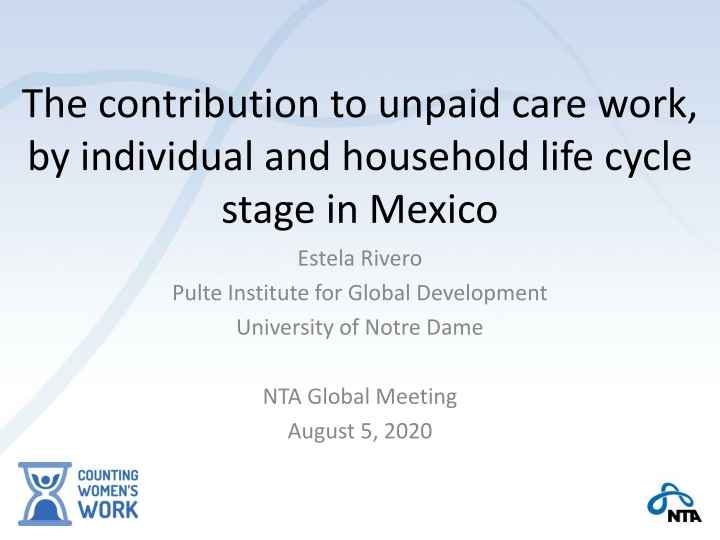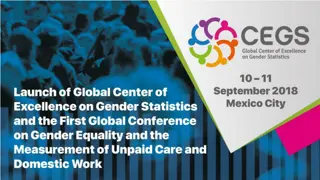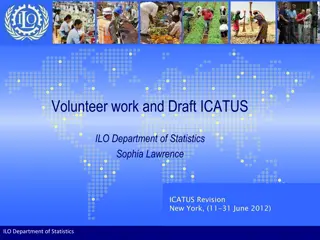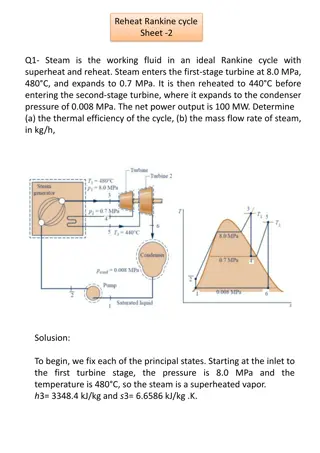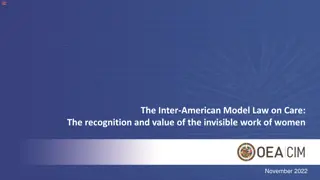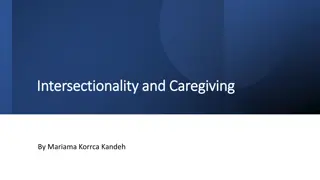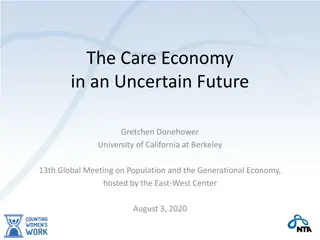Unpaid Care Work in Mexico: Insights on Household Life Cycle Stages
This presentation explores the contribution to unpaid care work in Mexico, emphasizing individual and household life cycle stages. It discusses the distribution of unpaid care work by sex, age group, and relationship to the household head, focusing on housework, children, and elderly care. The data from Mexico in 2014 sheds light on the significance of recognizing and addressing unpaid care work across different life stages and household dynamics.
Download Presentation

Please find below an Image/Link to download the presentation.
The content on the website is provided AS IS for your information and personal use only. It may not be sold, licensed, or shared on other websites without obtaining consent from the author.If you encounter any issues during the download, it is possible that the publisher has removed the file from their server.
You are allowed to download the files provided on this website for personal or commercial use, subject to the condition that they are used lawfully. All files are the property of their respective owners.
The content on the website is provided AS IS for your information and personal use only. It may not be sold, licensed, or shared on other websites without obtaining consent from the author.
E N D
Presentation Transcript
The contribution to unpaid care work, by individual and household life cycle stage in Mexico Estela Rivero Pulte Institute for Global Development University of Notre Dame NTA Global Meeting August 5, 2020
Motivation CWW has made important contributions to recognizing the value of women s work The recognize, reduce and redistribute (RRR) strategy requires to acknowledge that: To acknowledge that UCW is done by individuals in different life cycle stages To recognize that the amount and type of UCW needed within the household also varies with the life cycle Understand how UCW is distributed within the household
In this presentation Share of UCW by sex, age group and relationship to household head, and household life cycle Housework Children and elderly care Children and elderly supervisory care Data refer to Mexico, 2014
Definition of individual and household life cycle stages Age, sex and relationship to household head Head or spouse Children 15-29 y.o. Children 30 y.o. and older Other household members Household life cycle stage Young, no children Children 0 to 14 y.o. Children 15 to 19 y.o. All grown children Household head is 60 years or older + All disaggregated by sex
An example: Share of housework, done by female children aged 15 to 29 y.o. in households that have children 0 to 14 years old: ? ???? ?? ???? ?? ??? ? ?????? 15 ?? 29 ? ???? ?? ???????? ?? ???????? ?? ?? ? ? ?=1 i individuals within household i j household
Housework M head or spouse 80 Other F hhld members F head or spouse 60 40 20 Other M hhld members M children 15-29 0 F children 30+ F children 15-29 Young, no children Children 0 to 14 Children 15 to 29 All grown children Head 60+ M children 30+ Female heads do most housework In households with children 15 to 29, female children do 20% In households where the head is 60+, female children do 15%
Childcare M head or spouse 80 Other F hhld members F head or spouse 60 40 20 Other M hhld members M children 15-29 0 F children 30+ F children 15-29 Children 0 to 14 M children 30+ Female head or spouse does 65%, male head 20%, and young female children 8%
Childcare M head or spouse 80 Other F hhld members F head or spouse 60 40 20 Other M hhld members M children 15- 29 0 Young, no children Children 0 to 14 Children 15 to 29 All grown children Head 60+ F children 30+ F children 15-29 M children 30+ Different types of female members always contribute something to childcare
Eldercare M head or spouse 60 Other F hhld members F head or spouse 40 20 Other M hhld members M children 15-29 0 F children 30+ F children 15-29 Young, no children Children 0 to 14 M children 30+ Children 15 to 29 All grown children Head 60+ Greater sharing across genders and relationships
Summing up In general, women do more UCW than men Disregarding intrahousehold distribution of UCW may lead to: Ignoring the contribution of children and other household members Underestimating the inequality across genders Not recognizing the instances when men contribute
